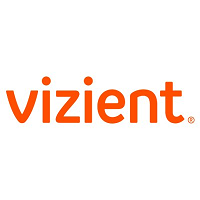 Vizient, Inc. (@VizientInc) released its latest Workforce Intelligence Report, finding that regular nursing hours have begun to stabilize but continue to be supplemented by overtime and contract labor hours at higher than pre-pandemic levels. The report, a collaboration between Vizient and Vaya Workforce, demonstrates how staffing shortages are negatively impacting hospital operating margins, and potentially, patient care. Access the Workforce Intelligence Report.
Vizient, Inc. (@VizientInc) released its latest Workforce Intelligence Report, finding that regular nursing hours have begun to stabilize but continue to be supplemented by overtime and contract labor hours at higher than pre-pandemic levels. The report, a collaboration between Vizient and Vaya Workforce, demonstrates how staffing shortages are negatively impacting hospital operating margins, and potentially, patient care. Access the Workforce Intelligence Report.
The latest data reflects the continued struggle of providers to retain full-time nurses since the pandemic and their reliance on costlier contract and overtime labor to deliver care. For example, while the percent of licensed nurse turnover has begun to trend downward, it is currently around 7%, about 47% higher than the turnover rate prior to the pandemic.
“The general downward trend is hopeful but the current levels of contract and overtime nursing hours are unsustainable and demonstrate that nurse shortages continue to challenge providers,” said Eric Burch, MBA, RN, FACHE, executive principal, Vizient. “Some hospitals that are short-staffed have been forced to reduce services, including in surgical suites, and close beds. Lower bed capacity means fewer patients are getting the care they need, and when you add higher labor costs to lower patient volume, you find hospital operating margins are negatively impacted, hampering the ability to invest in key workforce strategies. It’s a vicious cycle.”
The report outlines current and projected staffing challenges and highlights steps providers can take to mitigate the effects of nurse burnout and retain optimal nurse staffing levels. Retention is critical, as it can cost up to $88,000 to replace a registered nurse, according to at least one study.
“The cost of nurse turnover highlights the need for providers to not only focus on increasing retention, but also continue and or enhance efforts to minimize burnout. The fact that overtime continues to be heavily utilized is concerning for the overall health and well-being of the nursing workforce,” said Melanie Bell, MSN, RN, CENP, senior vice president at Vaya Workforce. “Providers should continue to strategize their use of contract labor and other flexible resources for optimizing their workforce, while maintaining balance with financial goals.”
Report findings include:
The impact of high labor costs on hospital margins: Even while nursing unit labor expense and operating expense have greatly improved in a half a year, down 34% and 7% respectively, they are still above pre-pandemic levels, impacting operating margins, which remain between -0.5% and -1%.
Travel nurse demand remains high: The need for contract labor has abated somewhat but is not solved: Projected demand for travel nurses has decreased since mid-2022 but is still 15% higher than pre-pandemic demand, and the hourly rate continues to be projected 15% above pre-pandemic rates as well.
Impact to patient care: As patient days rise, a gap between expected and observed patient length of stay is widening. Burch attributes this to a variety of factors, including workforce shortages.
“The patient journey through the hospital slows when departments are not fully staffed, delaying discharge, which adds avoidable costs for providers,” Burch said. “Even when some patients are ready for hospital discharge, they may have long waits to find rehab and skilled nursing facilities, which have also been affected by short staffing. This inability to transfer patients to appropriate facilities only adds to the shortfall of inpatient beds and resources to care for them.”
Burch says “reimagining staff duties” is one step providers can take to retain nurses.
The report offers strategies that providers should consider for mitigating the effects of nurse shortages, including ensuring nurses are working at the top of their license; embracing flexible shift options, such as block scheduling and shorter school-hour shifts; and reducing administrative tasks by eliminating documentation tasks that do not support patient care or that are repetitive.
Read past editions of the Workforce Intelligence Report.
About Vizient, Inc.
Vizient, Inc., the nation’s largest member-driven healthcare performance improvement company, serves more than 60% of the nation’s acute care providers, which includes 97% of the nation’s academic medical centers, and more than 25% of the non-acute care market. Vizient provides expertise, analytics and advisory services, as well as a contract portfolio that represents more than $130 billion in annual purchasing volume. Vizient’s solutions and services improve the delivery of high-value care by aligning cost, quality and market performance. Headquartered in Irving, Texas, Vizient has offices throughout the United States.
About Vaya Workforce
Vaya Workforce delivers Vizient members insight-driven advancements for every component of healthcare labor services. With over 620 participating facilities, Vaya provides hospitals across the nation with complete solutions for all temporary and permanent staffing needs. Their transparent marketplace includes a nationwide network of agencies to ensure cost savings and wide access to highly trained healthcare professionals. As a wholly owned subsidiary of Aya Healthcare, the nation’s largest healthcare staffing and technology firm, members benefit from accountable fulfillment and access to the largest marketplace of active job seekers. By leveraging its extensive data assets, innovative technology, and by serving as a trusted advisor, Vaya helps Vizient members make the most informed workforce decisions, fulfill their strategic goals, and drive leading practices and workforce innovations. The program is fully agency funded, allowing it to be zero-cost for the member.
